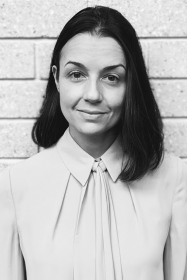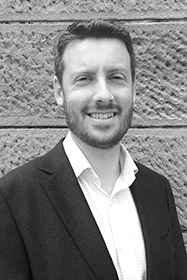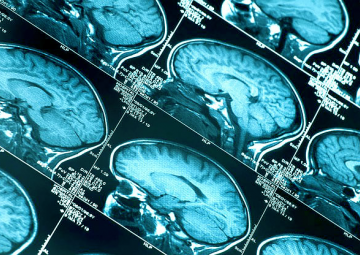
About the Neuroimaging Research Group
One of the key requirements of neuroimaging research is the multi-disciplinary collaborations between neuroscience, medicine, engineering and a host of sub-disciplines. While the research subjects and the clinical needs are provided by medicine, the theoretical underpinnings come from mathematics and statistics, and the methodological approaches from computer science and biomedical engineering, all forming critical components of the enterprise.
The Laboratory houses one computer cluster with 144 CPUs and eight workstations (Windows or Linux), as well as two data archival systems of about 80 terabytes. The MR images we study include 3D T1-weighted scans, T2-weighted (such as FLAIR sequence) scans, DTI (diffusion tensor imaging), 1H MRS (magnetic resonance spectroscopy), functional MRI (fMRI), Gd-perfusion MRI (pMRI), ASL (arterial-spin labelling), fluorodeoxyglucose positron emission tomography (FDG-PET) and Pittsburgh compound B (PiB PET). NiL hosts several research students (PhD candidates, Master by Research and Honours students) and post-doctoral fellows. NiL is a very important and successful component of CHeBA and a regular stream of high quality publications have emanated from NiL in the last few years. NiL staff have also created and written many versatile and important neuroimaging processing programs/algorithms and scripts in C, MATLAB, Perl, and Python. The equipment purchased over time has been funded by competitive individual research grants.
Neuroimaging Group Software
We have developed software for the mapping of brain white matter diseases and integrity. These are now available for download.
Aims
NiL is dedicated to researching the ageing of the human brain. By studying structural and functional magnetic resonance imaging and other neuroimaging modalities, we aim to improve understanding of brain ageing pathways, which in turn will lead to clinical advances in prediction, diagnosis and treatment. Our neuroimaging studies address normal ageing, mild cognitive impairment (MCI), and dementia.
Our Lab is interested in computational neuroanatomy, the development of a comprehensive structural and functional model of the brain. The distribution of structural changes in the human brain reflect the underlying pathology. The increasing sophistication of MRI allows neuroanatomical structures to be visualised, in vivo, in unprecedented detail. Clinical MRI is able to give good soft-tissue contrast and high spatial (<1 mm) resolution. Due to rapid advances in computing power and algorithm development, we are now well placed to study the extraordinary MRI-visible morphological variability of the human brain through mathematical models sensitive to subtle changes in neuroanatomical shape, complexity and tissue characteristics. Our recent work includes the mapping and modeling of cerebral white matter hyperintensities, algorithm development for examining the shapes and sizes of brain structures and cortical atrophy and, most recently, structural brain connectivity using DTI tractography.
Opportunities with NiL
The Neuroimaging Laboratory welcomes students from a variety of disciplines (including engineering, mathematics, statistics and IT) to join us for vacation work experience. We welcome both local and international students. In particular, we encourage students who are considering post-graduate studies and are actively looking for thesis topics. We hope that our Laboratory's research environment will provide students with excellent exposure to the exciting and challenging research field of neuroimaging. While the jobs are voluntary, we are happy to negotiate some stipends for students who contribute to our current research projects.
Staff
- Associate Professor Wei Wen
- Dr. Jiyang Jiang (John Holden Foundation Postdoc Fellow)
Students
- Russell Chander (PhD Candidate)
- Dr Jing Du (PhD Candidate)
- Abdullah Alqarni (PhD Candidate)
- Dr Rebecca Koncz (PhD Candidate and Conjoint Senior Lecturer)
- Chao Dong (PhD candidate)
- Shizuka Hayashi (PhD candidate)
- Mohammed Alghamdi (PhD candidate)
Alumni, Honorary Fellows and Collaborators
- Dr Heidi Foo
- Dr Wanlin Zhu (Postdoc Fellow and now UNSW Visiting Fellow)
- Dr Amir Seyed Batouli (PhD student)
- Dr Alistair Perry (PhD student)
- Professor Mirza Faisal Beg
- Dr Xiaohua Chen (PhD student)
- Dr Chia-Yueh Carlton Chu (Masters student)
- Associate Professor Yue Cui
- Professor Yong He
- Dr Jason Li (Masters student)
- Associate Professor Dr Tao Liu
- Associate Professor John Tilak Ratnather
- Assistant Professor Lei Wang
- Professor Aihua Xia
- Dr Haobo Zhang (PhD student and Postdoc Fellow)
- Dr Lin Zhuang (PhD student and Postdoc Fellow)
- Dr Zixuan Yang (PhD student)
Group Projects
- Investigation of cerebrovascular system - blood-brain barrier permeability, cerebrovascular reactivity mapping in the ageing brain.
- Genetic and environmental influences on human brain changes in ageing.
- Automated rating of lesions of small vessel disease, including perivascular spaces, lacunes and microbleeds, in the ageing brains using deep learning.
- Diagnosis and Prediction of MCI and AD using Pattern Rec¬ognition Methods
- Morphology of Cortical Surface: Cortical Folding Pattern and Sulcal Width
- Structural Brain Networks
- Functional Brain Networks
- Examining Cerebrovascular burden in the old brain using diffusion weighted imaging (DWI)







